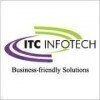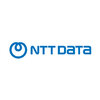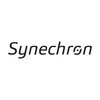Filter interviews by
ARTI CA fresher Interview Questions and Answers
ARTI CA fresher Interview Experiences
1 interview found
(1 Question)
- Q1. Why we will hire you
Interview questions from similar companies

I was interviewed in Apr 2024.
(6 Questions)
- Q1. Basic questions
- Q2. Job's related questions
- Ans.
My job related questions are related to my education, the degree course I have done, my diploma or my % what is my knowledge, skills, interest language or my location etc question questions are all good .
- Q3. Yes I am fresher
- Q4. All questions and answers good
- Ans.
Yes all questions and answers so good.
- Q5. Your location and arraya
- Q6. Company name Yes
(6 Questions)
- Q1. All questions job related
- Q2. My skills and knowledge
- Q3. My education and training
- Q4. My dream and work
- Q5. My working time fixed and day
- Q6. Interview are good
(3 Questions)
- Q1. My interview is so good
- Q2. My interview experience good
- Q3. All the best for any candidates
Interview Preparation Tips

Finance Executive Interview Questions & Answers
Virtusa Consulting Servicesposted on 13 Jan 2025
I applied via campus placement at Institute of Cost and Works Accountants of India (ICWAI) and was interviewed in Dec 2024. There were 3 interview rounds.
Online assessment (Technical, English, Reasoning)
(6 Questions)
- Q1. Difference between Balance sheet and trial balance
- Ans.
Balance sheet shows assets, liabilities, and equity at a specific point in time. Trial balance lists all ledger accounts with their balances.
Balance sheet is a snapshot of a company's financial position at a specific point in time.
Trial balance is a list of all ledger accounts with their balances to ensure debits equal credits.
Balance sheet includes assets, liabilities, and equity sections.
Trial balance is used to prep...
- Q2. Standard costing formula
- Ans.
Standard costing formula calculates the expected cost of a product based on predetermined standards.
Standard costing formula includes direct materials, direct labor, and overhead costs.
It helps in comparing actual costs with standard costs to identify variances.
Formula: Standard Cost = Standard Quantity of Inputs x Standard Price of Inputs
- Q3. Journal entries for Prepaid Accruals Depreciation with accumulated depreciation concept Provision for Bad debts DTA and DTL
- Ans.
Explanation of journal entries for Prepaid, Accruals, Depreciation, Provision for Bad debts, DTA, and DTL.
Prepaid expenses are initially recorded as assets and then expensed over time as they are used up.
Accruals are expenses incurred but not yet paid or revenue earned but not yet received.
Depreciation is the allocation of the cost of a fixed asset over its useful life, with accumulated depreciation representing the to...
- Q4. Case study on Ind AS 115
- Q5. Preparation of balance sheet and computation of various ratios
- Ans.
Preparation of balance sheet involves listing assets, liabilities, and equity. Ratios are computed using financial data from the balance sheet.
List all assets, liabilities, and equity on the balance sheet
Calculate various financial ratios such as current ratio, debt to equity ratio, and return on equity
Use formulae like Current Ratio = Current Assets / Current Liabilities
Interpret the ratios to analyze the financial he
- Q6. Accounting principles
(6 Questions)
- Q1. What is DTA and DTL
- Ans.
DTA stands for Deferred Tax Asset and DTL stands for Deferred Tax Liability.
DTA is an asset recorded on a company's balance sheet that may be used to reduce taxable income in the future.
DTL is a liability recorded on a company's balance sheet that represents taxes that have been accrued but not yet paid.
DTA arises when a company has overpaid taxes or has tax deductions that exceed its taxable income.
DTL arises when a c...
- Q2. Accounting entry for accumulated depreciation
- Ans.
Accumulated depreciation is a contra asset account that represents the total depreciation expense taken on an asset since it was acquired.
Accumulated depreciation is recorded on the balance sheet as a reduction from the gross amount of fixed assets to arrive at the net book value.
The accounting entry for accumulated depreciation involves debiting the depreciation expense account and crediting the accumulated depreciati...
- Q3. Few resume based questions
- Q4. Standard costing formula
- Ans.
Standard costing formula calculates the expected cost of a product based on predetermined standards.
Standard costing formula = Standard cost of direct materials + Standard cost of direct labor + Standard manufacturing overhead cost
Standard cost of direct materials = Standard quantity of materials x Standard price per unit
Standard cost of direct labor = Standard hours of labor x Standard rate per hour
Standard manufactur...
- Q5. Difference between budgeting and forecasting
- Ans.
Budgeting involves setting financial goals and allocating resources, while forecasting predicts future financial outcomes based on past data and trends.
Budgeting is a plan for how to allocate resources and achieve financial goals
Forecasting predicts future financial outcomes based on past data and trends
Budgeting is typically done on an annual basis, while forecasting can be done on a shorter or longer term basis
Budget...
- Q6. Meaning of variance analysis
- Ans.
Variance analysis is a technique used to identify and analyze the difference between planned financial outcomes and actual results.
Variance analysis helps in understanding the reasons for deviations from budgeted or expected figures.
It involves comparing actual financial performance with budgeted or standard performance.
Common types of variances include price variance, quantity variance, and mix variance.
Variance analy...
Interview Preparation Tips
First technical interview was for 45 - 50 mins
Second technical interview was for 20 mins

Financial Analyst Interview Questions & Answers
Hexaware Technologiesposted on 16 Jan 2025
I applied via Naukri.com and was interviewed in Dec 2024. There was 1 interview round.
(1 Question)
- Q1. Tell me about yourself.

I applied via Campus Placement and was interviewed in Apr 2024. There was 1 interview round.
(3 Questions)
- Q1. Self introduction
- Q2. Online communication
- Q3. Artificial intelligence

Financial Analyst Interview Questions & Answers
Societe Generale Global Solution Centreposted on 19 Mar 2024
(1 Question)
- Q1. Technical and process knowledge and scenario questions
(1 Question)
- Q1. What you know about Trade Life Cycle
- Ans.
Trade life cycle refers to the stages involved in a trade from initiation to settlement.
Trade initiation: Trade is proposed and agreed upon by parties involved.
Trade execution: Trade is executed on the exchange or over-the-counter market.
Trade confirmation: Parties confirm the details of the trade.
Trade settlement: Payment and transfer of securities occur to complete the trade.
Trade reconciliation: Any discrepancies ar

Senior Financial Analyst Interview Questions & Answers
Sutherland Global Servicesposted on 16 Aug 2023
I applied via Recruitment Consulltant and was interviewed in Jul 2023. There were 4 interview rounds.

(2 Questions)
- Q1. Very bad people never ever expect your interview will result in offer letter , they will keep you on infinite hold and will start searching for guy with less salary , they do interview for time pass neithe...
- Q2. Simple Finance terms
- Ans.
Simple finance terms refer to basic financial concepts and terminology used in the field of finance.
Simple finance terms include concepts like assets, liabilities, revenue, expenses, profit, and cash flow.
Understanding these terms is essential for analyzing financial statements and making informed financial decisions.
Examples of simple finance terms: ROI (Return on Investment), EBITDA (Earnings Before Interest, Taxes, ...
(1 Question)
- Q1. Very bad experience after 4-5 round of interview and taking my documents and salary slips they started keeping me on hold and looking for candidate with less salary.
(1 Question)
- Q1. If the HR is Santosh or Krish please withdraw your application they are never going to create offer letter
Interview Preparation Tips

Financial Analyst Interview Questions & Answers
Hewlett Packard Enterpriseposted on 12 Apr 2024
(1 Question)
- Q1. Basic accounting questions
(1 Question)
- Q1. Manager round about skills

Financial Controller Interview Questions & Answers
Bosch Global Software Technologiesposted on 12 Dec 2024
I applied via Referral and was interviewed before Dec 2023. There were 2 interview rounds.
(2 Questions)
- Q1. More about previous job profile
- Q2. How can you contribute to our existing process
- Ans.
I can contribute by implementing efficient financial controls, streamlining processes, and providing accurate financial reporting.
Implementing robust financial controls to prevent fraud and errors
Streamlining processes to improve efficiency and reduce costs
Providing accurate and timely financial reporting to support decision-making
Identifying areas for cost savings and revenue generation
Collaborating with other departm
(2 Questions)
- Q1. More about previous job profile
- Q2. How you can contribute to our existing process
- Ans.
I can contribute by streamlining processes, implementing cost-saving measures, and improving financial reporting.
Implementing automation tools to streamline financial processes
Identifying and implementing cost-saving measures to improve profitability
Enhancing financial reporting accuracy and timeliness through improved systems and controls
Interview Preparation Tips

(1 Question)
- Q1. What is the difference between EV and Equity Value
- Ans.
EV includes both debt and equity while Equity Value only includes equity.
EV = Equity Value + Debt - Cash
Equity Value = Market Capitalization + Preferred Stock + Minority Interest - Cash
EV is used to determine the total value of a company while Equity Value only represents the value of the shareholders' equity
EV is often used in M&A transactions while Equity Value is used to determine a company's stock price
Interview Preparation Tips
Excel - navigating data models etc.
ARTI Interview FAQs
Tell us how to improve this page.
Interview Questions for Popular Designations
- Financial Analyst Interview Questions
- Finance Executive Interview Questions
- Finance Manager Interview Questions
- Accountant Interview Questions
- Accountant Cashier Interview Questions
- Executive Accountant Interview Questions
- Senior Financial Analyst Interview Questions
- Accounts & Finance Executive Interview Questions
- Show more
Interview Questions from Similar Companies

Cognizant

NTT Data Information Processing Services

Sutherland Global Services

Hexaware Technologies
- Home >
- Interviews >
- ARTI Interview Questions >
- ARTI CA fresher Interview Questions
















